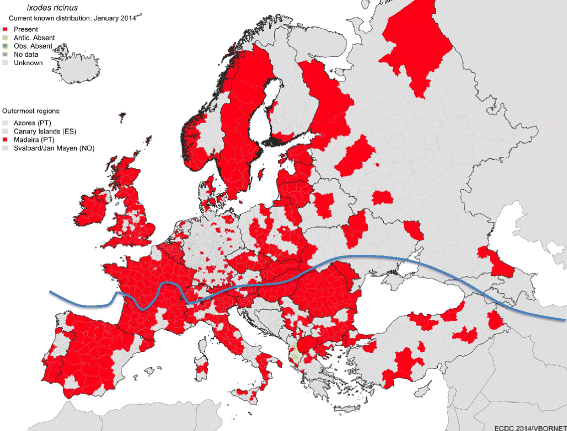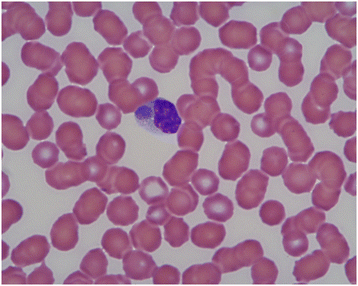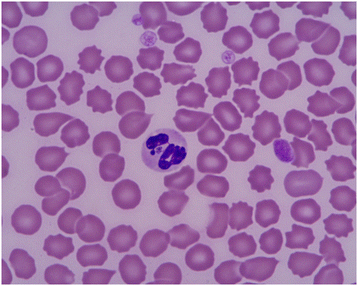Guideline for veterinary practitioners on canine ehrlichiosis and anaplasmosis in Europe
- PMID: 25649069
- PMCID: PMC4324656
- DOI: 10.1186/s13071-015-0649-0
Guideline for veterinary practitioners on canine ehrlichiosis and anaplasmosis in Europe
Abstract
Canine ehrlichiosis and anaplasmosis are important tick-borne diseases with a worldwide distribution. Information has been continuously collected on these infections in Europe, and publications have increased in recent years. Prevalence rates are high for Ehrlichia and Anaplasma spp. infections in dogs from different European countries. The goal of this article was to provide a practical guideline for veterinary practitioners on the diagnosis, treatment, and prevention of ehrlichiosis and anaplasmosis in dogs from Europe. This guideline is intended to answer the most common questions on these diseases from a practical point of view.
Figures




References
-
- Donatien A, Lestoquard F. Existence en Algerie d’une Rickettsia du chien. Bull Soc Pathol Exot. 1935;28:418–9.
-
- Huxsoll DL, Hildebrandt PK, Nims RM, Walker JS. Tropical canine pancytopenia. J Am Vet Med Assoc. 1970;157(11):1627–32. - PubMed
-
- Harvey JW, Simpson CF, Gaskin JM. Cyclic thrombocytopenia induced by a Rickettsia-like agent in dogs. J Infect Dis. 1978;137(2):182–8. - PubMed
-
- Madewell BR, Gribble DH. Infection in two dogs with an agent resembling Ehrlichia equi. J Am Vet Med Assoc. 1982;180(5):512–4. - PubMed
-
- Dumler JS, Barbet AF, Bekker CP, Dasch GA, Palmer GH, Ray SC, et al. Reorganization of genera in the families Rickettsiaceae and Anaplasmataceae in the order Rickettsiales: unification of some species of Ehrlichia with Anaplasma, Cowdria with Ehrlichia and Ehrlichia with Neorickettsia, descriptions of six new species combinations and designation of Ehrlichia equi and ‘HGE agent’ as subjective synonyms of Ehrlichia phagocytophila. Int J Syst Evol Microbiol. 2001;51(Pt 6):2145–65. - PubMed
Publication types
MeSH terms
LinkOut - more resources
Full Text Sources
Other Literature Sources
Miscellaneous

